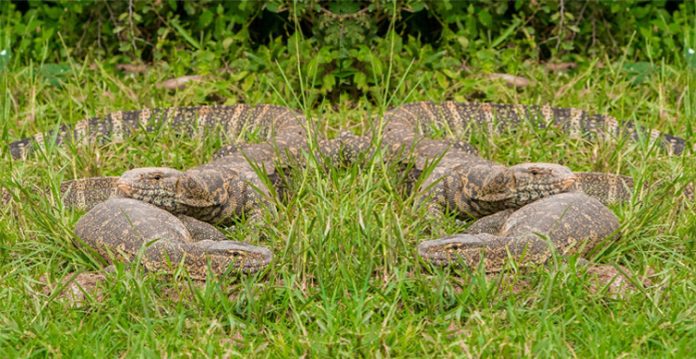Mumbai: Monitor Lizards, which once helped the Maratha General Tanaji Malusare scale the steep hilltop Sinhagad Fort in Pune in 1670, are now battling for their own survival.
The World Wildlife Fund-India and TRAFFIC have urged people to protect the ‘Varanus’ species of Monitor Lizards which are targeted for certain traditional medicines.
These large lizards, with different species measuring from 8 inches to others upto 3 metres long, are illegally traded for the males’ sex organs that resemble a ‘hatha-jodi’ or the root of the Tiger’s Claw (Martynia annua), a plant with diverse traditional uses in Ayurveda.
READ ALSO | Helpline for snake rescue on Nagpanchami
“The demand for ‘Hatha Jodi’ is one of the major drivers of poaching and illegal trade of monitor lizards in India today,” said Saket Badola, Head of TRAFFIC’s India office.
“There is evidence that populations of the Bengal Monitor, Common Water Monitor and Yellow Monitor are being impacted as a result, so it is crucial that people understand the gravity of the threat posed by illegal wildlife trade,” he added.
However, all the four species, including the Desert Monitor, are protected under India’s Wildlife (Protection) Act, 1972 and listed under CITES.
Monitor Lizards are also extensively poached for their meat which is considered a delicacy and believed to have medicinal properties.
READ ALSO | A Rare Disease continue to hunt Tigers in Zoo Park
The TRAFFIC-WWF India on Friday launched an online campaign “Buying Is Stealing” warning people against buying medicinal products made from Monitor Lizards, among other protected wildlife species.
Badola said Monitor Lizards are essential to agricultural and forest ecosystems as they devour insects, rodents, bird eggs, snakes, fish, and crabs, thereby regulating their populations.
In some regions, they are also food sources for other predators, besides Monitor Lizards are keen scavengers playing a significant role in biomass decomposition and recycling, clearing carrion, and help control the spread of the disease.
Besides poaching, Monitor Lizards are also threatened by large-scale habitat degradation due to urbanization, rapid expansion of agricultural lands, pollution, over-fishing, the encroachment of forests and water bodies, man-animal conflicts, and retaliatory killings which are a direct threat to its survival, he said.
Besides the Indian sub-continent, the Monitor Lizards are found in China, south Japan, South East Asia, Australia, isles in the Indian Ocean and the South China Sea.
In India, it is known by different names across various states as Goh, Gohi, Goshaap, Godhi, Gui Xaap, Udupi, and Ghorpad, among others.


